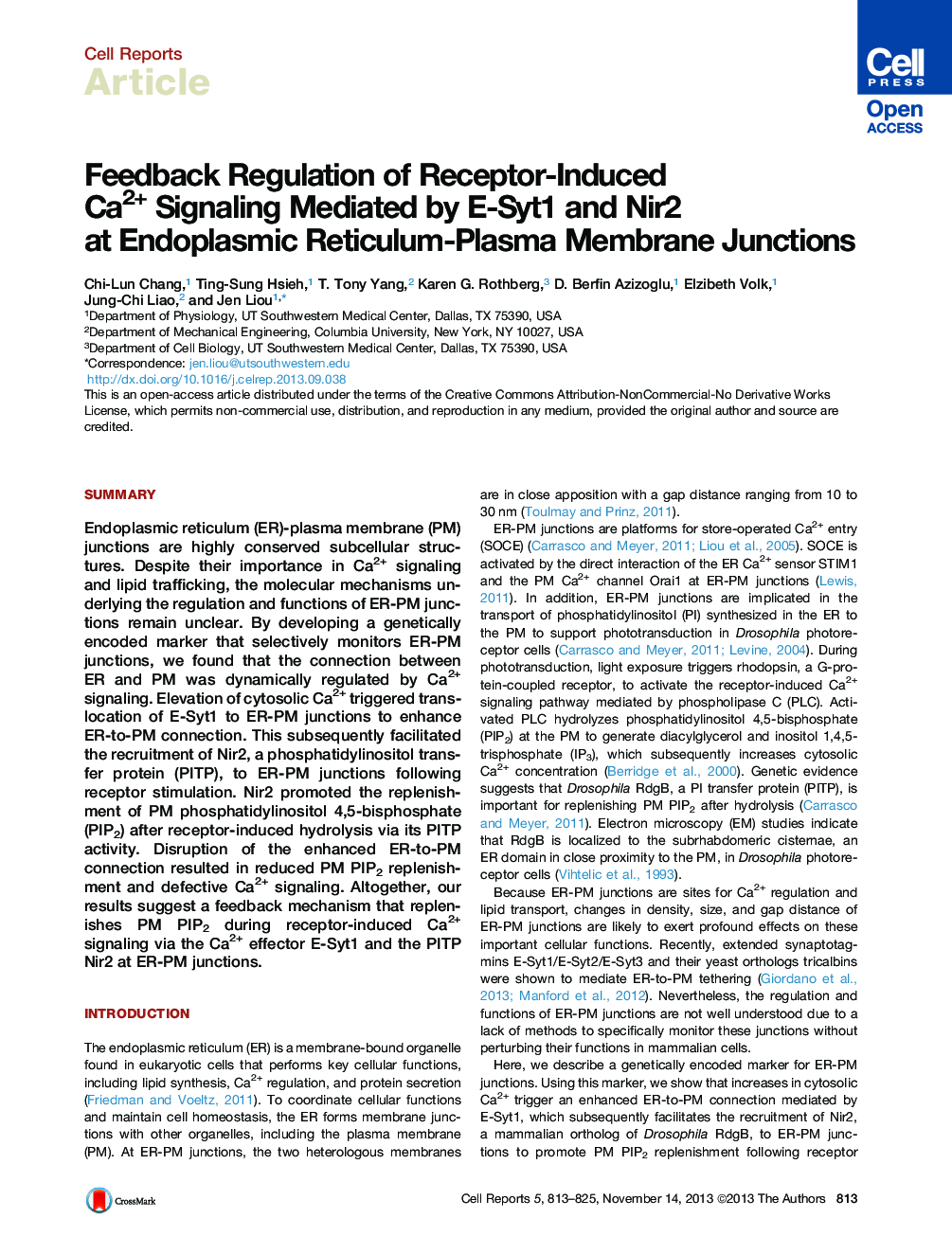| Article ID | Journal | Published Year | Pages | File Type |
|---|---|---|---|---|
| 2041562 | Cell Reports | 2013 | 13 Pages |
•A marker is developed for studying the regulation and functions of ER-PM junctions•Ca2+-induced E-Syt1 translocation to ER-PM junctions enhances ER-PM connection•An enhanced ER-PM connection facilitates Nir2 recruitment to ER-PM junctions•Nir2 promotes PM PIP2 replenishment following receptor-induced hydrolysis
SummaryEndoplasmic reticulum (ER)-plasma membrane (PM) junctions are highly conserved subcellular structures. Despite their importance in Ca2+ signaling and lipid trafficking, the molecular mechanisms underlying the regulation and functions of ER-PM junctions remain unclear. By developing a genetically encoded marker that selectively monitors ER-PM junctions, we found that the connection between ER and PM was dynamically regulated by Ca2+ signaling. Elevation of cytosolic Ca2+ triggered translocation of E-Syt1 to ER-PM junctions to enhance ER-to-PM connection. This subsequently facilitated the recruitment of Nir2, a phosphatidylinositol transfer protein (PITP), to ER-PM junctions following receptor stimulation. Nir2 promoted the replenishment of PM phosphatidylinositol 4,5-bisphosphate (PIP2) after receptor-induced hydrolysis via its PITP activity. Disruption of the enhanced ER-to-PM connection resulted in reduced PM PIP2 replenishment and defective Ca2+ signaling. Altogether, our results suggest a feedback mechanism that replenishes PM PIP2 during receptor-induced Ca2+ signaling via the Ca2+ effector E-Syt1 and the PITP Nir2 at ER-PM junctions.
Graphical AbstractFigure optionsDownload full-size imageDownload as PowerPoint slide
